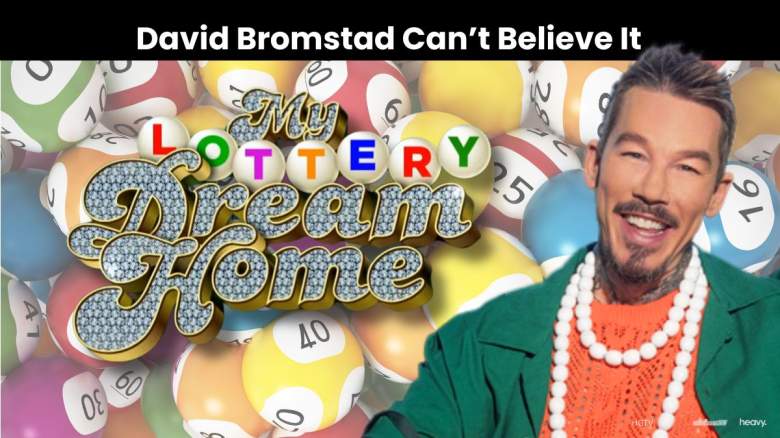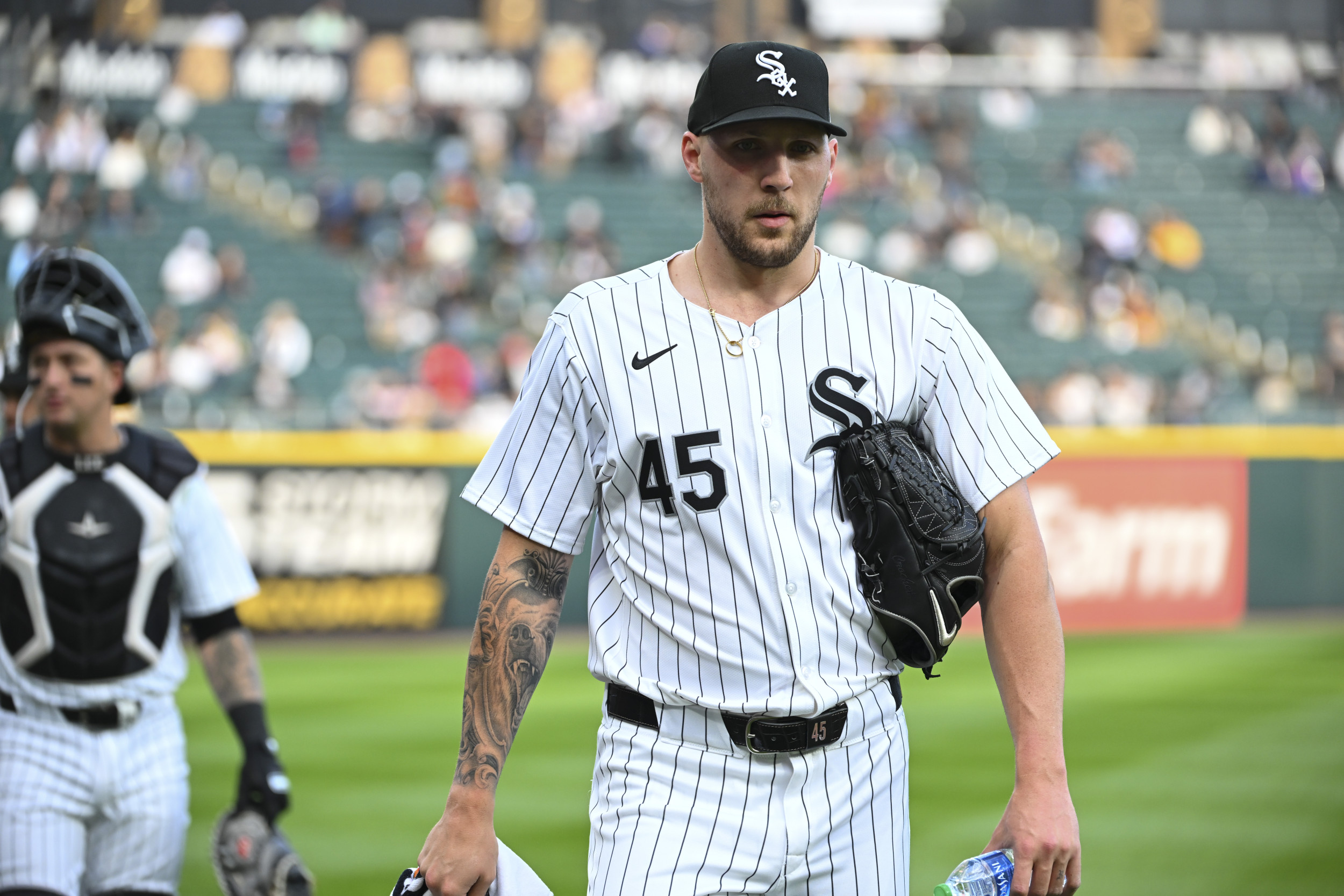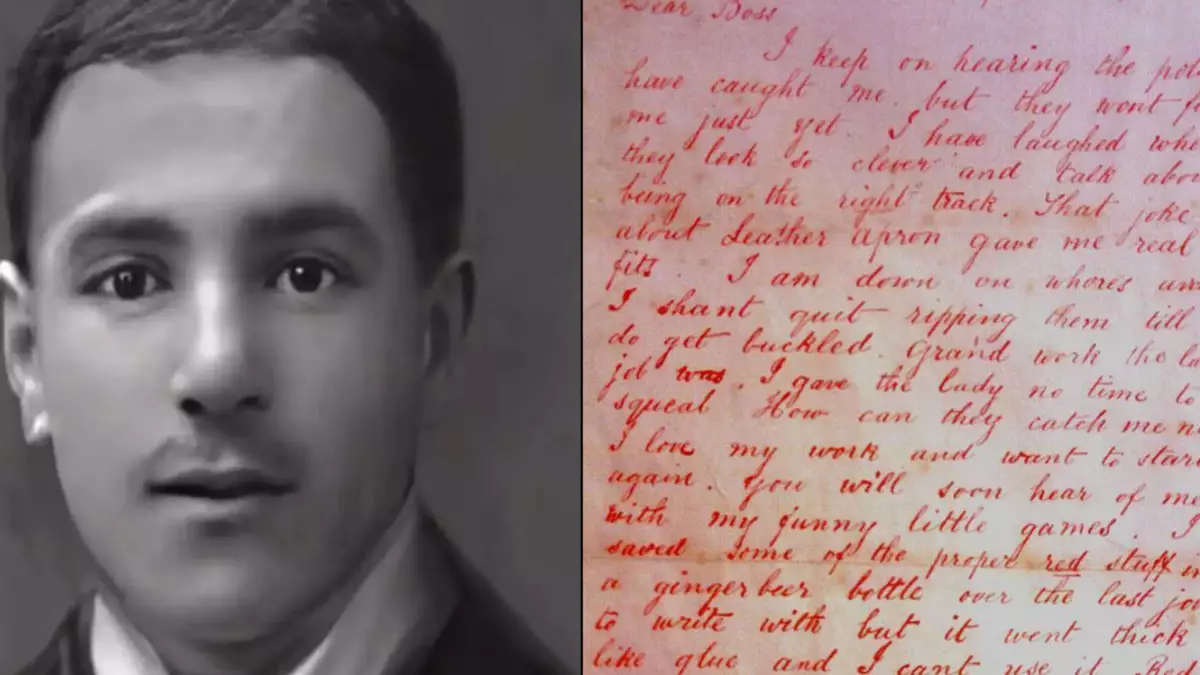This year has seen a lot of returning features and revamped traditions here at The A.V. Club, and Halloween is giving us the opportunity to bring back one more: Asking a horror aficionado to program a 24-hour horror film marathon that readers can enjoy at home. Filmmaker Robert Eggers contributed a selection to our 2016 edition back when he was fresh off his directorial debut The Witch, but with his Nosferatu set to hit theaters this Christmas, we just had to get him back for the full all-nighter. Eggers’ meticulous designs and damaged psyches permeate all of his feature work, whether it’s the Lovecraft and Poe-adjacent dialect of The Lighthouse or the grim mythmaking of The Northman. His dedication to research and a consistent style that spans cinematography, performance, and art direction have created some of the most tangible, engrossing genre films of the last decade. Eggers selected 13 films, all of which were released before 1962 and most of which run less than 90 minutes. We’ve supplemented this onslaught of Gothic period pieces with a few other films he mentions, but once you’ve spent 24 hours unraveling alongside these characters, you’ll be in the same atmospheric headspace as the upcoming Nosferatu.
As always, we encourage you to try this festival at home and post your experiences in the comments section.
6 p.m. The Innocents (1961)
Robert Eggers: I chose old black-and-white Gothic horror movies. Castles, moldering mansions, flowing curtains, cemeteries, haunted moors, rakes, demon lovers, secretive housekeepers, forbidden rooms, hidden passageways, haunted ingénues with diaphanous gowns, with candelabras, and grave robbers, obsession, madness, sexual repression. And the fog machines never turn off. This is a kind of horror movie that I really love, and also it’s something that I am exploring in my Nosferatu.
Some of these films are old favorites that I’ve watched a lot, and some of them were me trying to do a deep dive to learn more about Gothic horror movies in the past 10 years. But all of them were things that I would just have on a lot. Almost as music, kind of watching them kind of not. Just being immersed in the atmosphere.
There’s a lot of similarities to these movies. I think four of them have the same plot [laughs], but it’s that world that I just want to be in. And as much as I love Hammer horror movies, which I truly do, and watch them obsessively as well, old black-and-white movies are more transportive than the flat color photography of the Hammer period horror movies. I also only chose period movies, because there’s obviously lots of great Val Lewton [movies] set in their contemporary era, but we didn’t do that.
Okay, so The Innocents! By Jack Clayton and based on The Turn Of The Screw, it’s without a doubt the best film on the list. This is going to be on every horror movie list, because it is one of the greatest horror movies that has ever been made. It’s also the one movie on the list that someone who’s not a movie dork could enjoy.
It’s [director] Jack Clayton and [cinematographer] Freddie Francis. Francis is most famous today for working with David Lynch, but he also directed a ton of Hammer horror movies. The staging that Francis comes up with, the camerawork, is so wonderful. The tone, the music, it is just so creepy. The sexual repression and the implicit things that are going on make the movie so, so chilling. I’ve seen modern TV versions where they go to town with Miss Jessel and the gardener and it’s just not effective. Having all that stuff in your imagination makes the movie so charged. When Deborah Kerr finally kisses Miles at the end, you’re just shocked. You’re totally floored. I can’t recommend this movie enough.
The A.V. Club: This was also on Edgar Wright’s list. He mentioned a line that passed him by when he was a kid, but shocked him when he watched it as an adult: That the couple at the center of the film used the home’s rooms “by daylight as though they were dark woods.”
RE: The idea that the kids were just always with them, with that kind of dialogue? Truman Capote contributed to the screenplay, and that was a very wise choice. Another famous thing is that it was shot in [CinemaScope]. Francis and Clayton wanted to shoot in 1:33 or 1:37, but the studio wouldn’t let them. They ended up doing this incredible widescreen staging, and then for the hallway stuff that they wanted to be claustrophobic and scary—where 1:33 would have been their friend—they made a vignette that gives you the same feeling, and contrasts with the widescreen opulent stuff of Bly in such a powerful way.
8 p.m. The Queen Of Spades (1949)
RE: Another movie that is partially on here because I admire the staging so much. In some ways it’s more atmospheric because it has more practical effects of weather; there is more literal fog, and the snow. That contributes to this claustrophobic dream-like feeling. It’s also superbly Russian in the production design and the costume design, with the Roma dancers and singers. It takes me there. Maybe less of a horror movie than the previous one, but it has excellent suspense.
The scariest scene is when Anton Walbrook is face-to-face with Edith Evans and there’s so much tension, you don’t know what’s going to happen, and you feel like you’re going to explode. Evans’ performance is awesome. It should also be be mentioned that Yvonne Mitchell, the ingénue, was in some of the most fucked-up British horror movies, like Demons Of The Mind and Crucible Of Horror.
But the staging and the snow are very influential to Nosferatu. There’s a certain kind of snow machine that has been outlawed as being too pollutant and toxic. I used it on The Northman, but in the time between Northman and Nosferatu it was outlawed. So, I was watching this and saying, “How do they do the snow here? Let’s do that.”
9:30 p.m. Svengali (1931)
RE: These three movies I’ve seen the most, so that’s why they went to the top. A lot of Svengali sucks, to be honest with you. Most of these are based on literary works. The last one was [Alexander] Pushkin and this is based on the novel Trilby. It’s also based on a play of Trilby that is seemingly bad, with lots of comic stuff. That’s something that’s always surprising when you watch these 1930s movies: All this low comedy that seems to be needed for movies that were trying to reach a broad audience, but it’s totally painful and takes you out of it. But [John] Barrymore as Svengali is so incredible. I’m also a big fan of Marian Marsh, she’s really well cast in this. She was like 17 and he was like 50, which is horrifying.
And frankly, in the last act when he’s got the super-tall beaver top hat and the fur coat…if I was super-skinny, I would rock that look all the time. It would look so awesome.
I sent this movie to Bill Skarsgård, I don’t know if Bill watched it or not. But John Barrymore’s interpretation of Svengali was very influential to how I saw Orlok in my version. Obviously, the scenes that work for a modern audience today are the hypnotism scenes. When he reaches out to Marian Marsh telepathically, and there’s that awesome shot through the Expressionist chimney tops? You just don’t get better than that.
You see the shadow of the hand going over the city [in Nosferatu] which is an ode to this and a F.W. Murnau shot from Faust. This movie was very much on my mind with Nosferatu.
AVC: It’s such a horny pre-Code movie.
RE: It is. That’s another thing that you’ll find seems to interest me: These are all sort of dirty, particularly the next one.
11 p.m. Murders In The Rue Morgue (1932)
RE: Opens with Swan Lake, which is forever linked with Universal horror movies for me since I was a kid. Look, this is not a good movie. But I wasn’t going to do Dracula, Frankenstein, Bride Of Frankenstein, or any of the classic Universal ones. Black Cat I really like, but it’s not period, so it didn’t fit into what I was going for. And honestly I have watched this movie a lot, sort of half-paying attention because a lot of it is pretty bad. But the Parisian sets are Expressionist and cool—it’s the same art director [Charles D. Hall] who did Dracula, Frankenstein, and Bride Of Frankenstein—and Karl Freund shot this, Dracula, Metropolis, and several Murnau films, including some lost ones, like Der Januskopf, a Jekyll and Hyde which I would love to have seen.
Bela Lugosi has a cool performance. The circus is cool. His laboratory is cool. But when he’s torturing that woman, trying to get her blood on the cross? That’s legitimately scary. Sometimes with these movies, when there’s no music, you’re dying a little bit because it’s not giving you what you need, but her crying with the utter silence makes it feel too real and quite disturbing.
Anyway, it’s about a mad scientist who’s got an ape, and thinks he’s going to find the missing link by capturing young beautiful women and mixing their blood with the ape’s blood. It has nothing to do with Poe at all.
The only thing that is actually similar to the Poe story is the murder that the ape does, which is cool, and then there’s this fairly thrilling climax on the rooftops of Paris. I don’t have proof—but I will say it influenced David Lean’s Oliver Twist. But I know that, all in all, it’s pretty bad.
12 a.m. Uncle Silas (1947)
RE: It’s hard to find. I have it on DVD but…Katina Paxinou, who is the horror in this movie—she plays this creepy governess with a lot of secrets—anyway, she’s a well-known Greek actor and so my DVD is a Greek import.
It’s about Jean Simmons, who is an heiress, a teenager, and basically everyone’s trying to kill her to get her dad’s money, more or less. In a Jane Eyre-y vibe, she ends up living in a Thornfield Hall-type spooky manor house with her creepy uncle Silas who is both supposed to be kind of seductive (but he’s not in the movie). I do like Derrick De Marney’s performance even though I don’t know who the hell he is. It’s a good Gothic movie; the wind, the rain, the curtains, all that good stuff. Fog, the graveyards, the house is excellent. Simmons is great, she just did Great Expectations with David Lean and she’s going strong here again, but where it’s horror is the governess. What makes you poo your pants a tiny bit, is her.
1:30 a.m. The Body Snatcher (1945)
RE: Okay this one’s good. This is a banger. I don’t know if I’m going out on a limb by saying this, but of Bela Legosi, Vincent Price, Christopher Lee, Peter Cushing, and Basil Rathbone—I guess he can be a little bit more contained—but I think Boris Karloff is the best actor. Lon Chaney may be the best, but Karloff is very dynamic, obviously can chew the scenery, but he gets the joke of life—so did Vincent Price—but he has really strong acting chops. This movie has such excellent dialogue for Karloff, and there are some awesome scenes. It’s based on a Robert Louis Stevenson story, it’s a Burke and Hare sort of thing. There’s a doctor who’s played by Henry Daniell, who’s in a couple other movies on the list, who has Boris Karloff, who’s a cabbie, dig up bodies for him. But then, of course, they run out of bodies and have to start killing bodies. Then there’s a lot of blackmail going on. The best scene is Bela Lugosi plays a schlubby servant of Henry Daniell who gets the drift that Karloff is killing people, and he tries to blackmail Karloff. That scene is so good.
The twisted relationship that Karloff has with Daniell, his perverseness and his just wanting to control some posh guy, is awesome. He just totally goes for it. The other scene that is great horror is when the street singer is in the alleyway. That is chilling and very Val Lewton, very subtle and really effective. This one also has an Edinburgh setting, which they hammer home in the beginning with lots of Scottish shit, and people are wearing Scottish bonnets probably unrealistically commonly, but it’s an American movie so they’re trying to really ram it home.
And fun fact, the DP [Robert De Grasse] shot Tall In The Saddle, which is a B-Western with John Wayne and one of my favorite Westerns.
3 a.m. The Hound Of The Baskervilles (1939)
RE: Maybe I regret choosing this, maybe not. Roy William Neill, who directed another movie on this list, he directed the vast majority of the Basil Rathbone Sherlock Holmes movies for Universal. They were B-movies and they were all contemporary. But the first two Rathbone/Holmes movies were Fox, and they had money. They had a lot more atmosphere, and they were Victorian. Hound Of The Baskervilles is definitely the first Sherlock Holmes movie I ever saw. I watched a ton with my grandpa as a kid. And the first time I ever went to London, when I got to my crummy hotel I turned on the TV and it was playing. I was like, “this is so cool.”
This is a movie I put on in the middle of the night if I’m having a hard time sleeping, because it’s kind of comforting. But having watched it in the past couple of years more attentively, I kind of prefer the staging of the B-movies. He didn’t have time to do setups, so he was doing lots more complicated oners that I found more inspiring. Sidney Lanfield…he’s got way too many fucking shots for my taste. But the haunted moors are so well done. The hound itself is really fucking scary, and the big climactic fight is really good. But I find it weird in general that Hound Of The Baskervilles is so popular since Holmes is not in act two…Nigel Bruce, who I love, is just bumbling around for all of act two. You’re like, come on, please come back to the movie.
How did you feel about this? And do you have a history with this one?
AVC: I had not seen any of the Rathbone Holmes films. I was already a little anti-Holmes because I like a mystery that gives me a shot at solving it. And so many Holmes stories are like, “Ah, but dear Watson, I smelled such and such.” You can’t smell anything, that’s unfair to me, the reader. But this one was fun because of what you were saying. The moors look incredible. I don’t usually find dog stuff that scary in movies, because it’s usually so clear that the dog is having a great time and is just excited to see the person he’s “attacking,” but the fog makes it frightening because a lot is obscured. And Rathbone’s just excellent.
RE: Yeah, he’s awesome. The Peter Cushing Hound Of The Baskervilles is not bad either. Though they change things, and there’s poisonous tarantulas and all kinds of shit. But you know, hey, it’s Hammer.
4:30 a.m. The Black Room (1935)
RE: From [Roy William Neill] the director of the Holmes movies that maybe I actually secretly prefer. The Black Room takes place in some vague Central European country, like maybe Hungary, maybe Bohemia. Boris Karloff plays identical twin brothers that are aristocrats, and there’s a family curse that goes back generations about them killing each other. There’s lots of intrigue and because they’re twins, Karloff gets to play the evil brother and the good brother and the evil brother pretending to be the good brother so that he can get Marian Marsh from Svengali.
Especially for an American movie, I’m very impressed by how Central European it feels. The lengths they went to with the costuming in particular. There are a lot of people who sound like very fucking American extras, but they also found lots of immigrants with mustaches to say things, and that adds a lot.
And, obviously, Karloff, I mean, you were telling me you liked his performance earlier.
AVC: There’s a reveal after a chess match where he sinks back in his chair and lets his performance as one twin unfurl into his performance of the other one. It’s so good.
RE: Yeah, it’s really cool. This one doesn’t take studiousness to enjoy [laughs].
5:45 a.m. Jane Eyre (1943)
This is a weird one, but it’s the scariest Jane Eyre. It’s directed by Robert Stevenson, who weirdly made like every fucking Disney movie you ever saw as a kid. Old Yeller, Darby O’Gill [And The Old Little People], Mary Poppins, The Gnome-Mobile, Bedknobs And Broomsticks, Blackbeard’s Ghost, like fucking everything. The Shaggy D.A., like all of that shit. So crazy. Anyway, [David O. Selznick] was putting this together, but there were lots of egos—Orson Welles was a producer. George Barnes, who shot Rebecca and then Spellbound after this, was the DP and they had this prolific architect as the production designer. This is a Bernard Herrmann score, and I used a little bit of it as the temp score in The Lighthouse.
The child Jane Eyre is very haunted—by the way, we’ve got the doctor from The Body Snatcher as the nasty teacher of the school in this—and Elizabeth Taylor as her friend who dies. Joan Fontaine, obviously, in Rebecca already proved that she can do this exact same role in this exact same story. But she does it well here. And Orson Welles is…I don’t think Orson Welles is generally hammy, but he is pretty hammy in this. The fake nose doesn’t help, but it feels like he’s just, “I am not handsome enough for this, but I’m going to give it my best to be handsome, and the lower I talk and the more serious I take myself, the more handsome I will become.”
But the lighting is so good, the depth of the detail in the manor house, I find very seductive and very inspiring. And why I think it is the scariest Jane Eyre—there’s good fog and moors and trees and whatever—but the way they deal with Rochester’s wife in the attic is quite scary. It was the ‘40s, so they could entirely dehumanize the character into a creature, which is not great given the gender politics of what’s actually happening with this poor woman. But it is effective in a horror way. And I find the witch laugh, and when he finally opens the door after the wedding and she lunges at him…it’s pretty scary.
AVC: I read that Aldous Huxley helped out with the script and I was like, “Oh, no wonder this one’s so weird, even for a Jane Eyre adaptation.”
RE: Yeah, it is. My favorite Rochester, though, is Timothy Dalton in this TV movie. He’s too handsome. Zelah Clarke is really well cast as Jane. Like she is plain Jane. It’s so easy to see her so obsessed with Timothy Dalton. He’s just so hot and so cool. And it’s like, “Yeah, yeah, you locked up your wife. Like, it’s fine.”
7:15 a.m. Bedlam (1946)
RE: This one is definitely more horror adjacent. And it loses steam in the horror direction in the second half, which is a little frustrating. But basically there’s this woman Nell Bowen, who’s the protégé of some rich dude. And she wants to make Bedlam, the asylum, less shitty. Boris Karloff runs Bedlam and he’s just a fucking psychopath. Eventually he says that she’s crazy and locks her up in there.
What is cool about the second half of the film is she is a really strong character, so unlike all the other movies in here, you have the female protagonist really fighting to get what she wants and getting it. And she doesn’t back down, because the villain, played by Karloff yet again, is a total fucking psycho. I don’t know if I can remember, but he says, “The ones that act like dogs, I beat them. The ones that act like pigs, I let them roll around in their own filth. The ones that act like tigers, I cage them.” Then he goes up to this beautiful comatose teenage girl and he’s like, “This one’s a dove,” and you’re just like, “Oh god, I don’t want to know anymore.”
With my particular interests, the period world-building by using these [William Hogarth] paintings is really rich, really inspired. And actually, it’s pretty good period dialogue, especially for an American movie.
8:45 a.m. Dragonwyck (1946)
RE: Yet another Jane Eyre. We’ve already done Jane Eyre twice. Here’s the third. Only this one is the only movie here that takes place in America. Good director. Joseph L. Mankiewicz did All About Eve. I like his Julius Caesar a lot. The Ghost And Mrs. Muir has some of the best rain photographed through windows that I can think of in a black-and-white movie, and also stars Gene Tierney, who I like quite a bit.
So here, Tierney is a farm girl, somehow some distant relative of this rich Dutch guy in the Hudson Valley, played by Vincent Price, who takes her in to be the governess, but then things escalate in their romance and obsession. It’s clearly a massive influence on Crimson Peak. There is this handsome doctor who is very much that role in Crimson Peak. If you’re a Crimson Peak fan, definitely check it out.
But the real headline of this is, I think it’s Vincent Price’s best performance. Witchfinder General is very good too. But he needs a good director to keep him in line a little bit. Obviously I love the Roger Corman movies, and The Abominable Dr. Phibes and anything that Price is in. But he can get a little goofy, and he doesn’t here. To see him really being buttoned up—really still, not moving his face, really in control—and then to see the madness escalate at the end when he’s totally manic? It’s effective. It’s also nice to see him young as the ingénue because…I don’t know if you’ve seen The Oblong Box, which was made in the late ’60s, but he looks like he’s 65. And he has a young fiancé and he’s got his hair dyed trying to be in his 30s. It’s painful. This is nice, he’s age appropriate.
AVC: I watched that one when I was doing a Poe run a couple years back. I don’t know if Poe stuff lends itself to great movies.
RE: The challenge with Poe is that his belief, which he proves, is that the short story is the best way to tell a horror story. Certainly it’s the best way to tell a Poe horror story. But then, you know, when you’re making a movie, you’re always like, “Fuck, it’s only an hour long, I need to pad it with shit or rewrite it.” And then it all goes astray.
10:30 a.m. The Face At The Window (1939)
Face At The Window is in some ways the clunkiest, but Rue Morgue is worse. It’s a werewolf-adjacent movie. So Tod Slaughter was this melodrama stage actor. Sometimes when he was younger, he played romantic leads, but he basically became famous playing mustache-twirling, over-the-top villains. And he does it really well. He made a series of film adaptations with George King, the director, of these melodramas.
For me, who’s interested in the history of this stuff, it’s cool to see how these plays are adapted and mounted. They were called Quota Quickies, which were films that were made really cheaply to fulfill a government requirement, because British studios had to distribute a certain amount of British movies. So, in order to just make enough movies, they let these guys make these shitty movies. But they had final cut because of it, which is nice. No studio intervention. So while they are clunky and while they are kind of low budget, they’re pretty tight. The pacing is good because they were plays.
The plot’s very convoluted, but that sort of helps it. Maybe I’m just an idiot, but I was kept guessing at the end. Like when Tod Slaughter takes his gloves off, I was like, “Are you kidding me? How does that work?” So, there’s a werewolf who’s going around stabbing people, as werewolves do. Tod Slaughter plays Chevalier Lucio del Gardo, who is trying to fuck everybody over because he wants to be with this young woman. That’s the quickest way to explain it.
There’s a cool werewolf scare, at least one. There’s a kind of thrilling ending, Tod Slaughter is a lot of fun. The wolf howl sound design is really cool. It’s very unique. There seemed to have been, in America anyway, like seven in the ‘30s that they just kept reusing. But I’ve not heard this one, except for in this movie. It also has one of my favorite cinematic cigars. When the hero is disguised, he has this really cool long cigar. Aaron Taylor-Johnson smokes the same kinds of cigars in Nosferatu.
And also, if you’re into this, The Catman Of Paris is a Parisian werecat movie, a B-movie from Republic Pictures in the ’40s. It’s got some cool shit in it.
AVC: I was going to ask if you’ve seen Slaughter’s Sweeney Todd.
RE: Yeah, it’s really cool. I almost went with Sweeney Todd, but this fit the vibe of everything else a little more. I’m really trying to make all these the same, so it’s a really difficult 24 hours [laughs]. But yeah, I highly recommend it.
11:30 a.m. Corridor Of Mirrors (1948)
RE: It’s a weird one, right?
AVC: It’s strange. Terrence Young? Sorry?
RE: Yeah, that’s the strangest part! Technically this is another Jane Eyre, but less so. One of the things I like about this movie is that while you’re like, “Okay, that’s this genre trope,” then something happens. You’re like, “Whoa, I was not expecting that.” It is always able to play with Gothic genre tropes. Another thing, in the world of these male-directed movies, is Edana Romney—who plays Mifanwy, the lead—she wrote the script. Isn’t that weird? And also like, who the hell is she? She’s great in the movie, but I don’t know who this person is.
There’s a short thing on IMDb that says, “A man falls in love with a beautiful young woman and begins to suspect he may have also loved her in a previous life.” Yeah, for sure. But it’s so much weirder than that. There’s this Welsh woman and you’re like, “Okay, she’s having an affair, what’s going on?” She’s going to meet her lover, and then she shows up to Madame Tussauds wax museum and then her lover seems to be one of the wax figures in Madame Tussauds. At that point, like four minutes into the movie, you’re like, “This is going to be weird.”
She has this romance with this artist who…is obsessed with this painting of this Renaissance woman and he’s trying to make her become the woman, and he has this corridor of mirrors, which is totally fucking scary. It reminds me of the corridor of the witch in Return To Oz. That corridor and the mannequins in there are truly fucking scary. But again, his obsession with this past period means he has this crazy party where people are dressing in costume, and as the sequence goes on, it almost feels like you’re in the Renaissance for a while and then you come out of it. I’ve never seen anything quite like it. It’s very artfully done, and truly unique. It’s also Christopher Lee’s first movie. Woo!
Supplemental Viewing:
1 p.m. Sweeney Todd: The Demon Barber Of Fleet Street (1936)
2 p.m. The Catman Of Paris (1946)
3 p.m. Demons Of The Mind (1972)
4:30 p.m. Crucible Of Horror (1971)




















 English (US) ·
English (US) ·